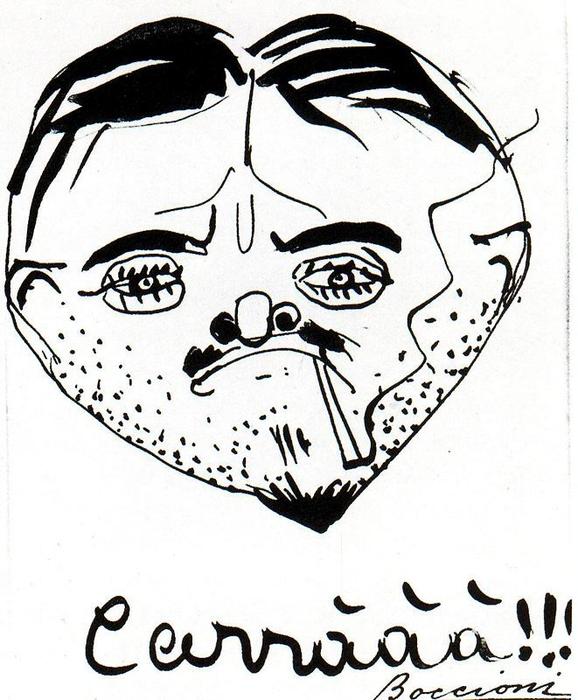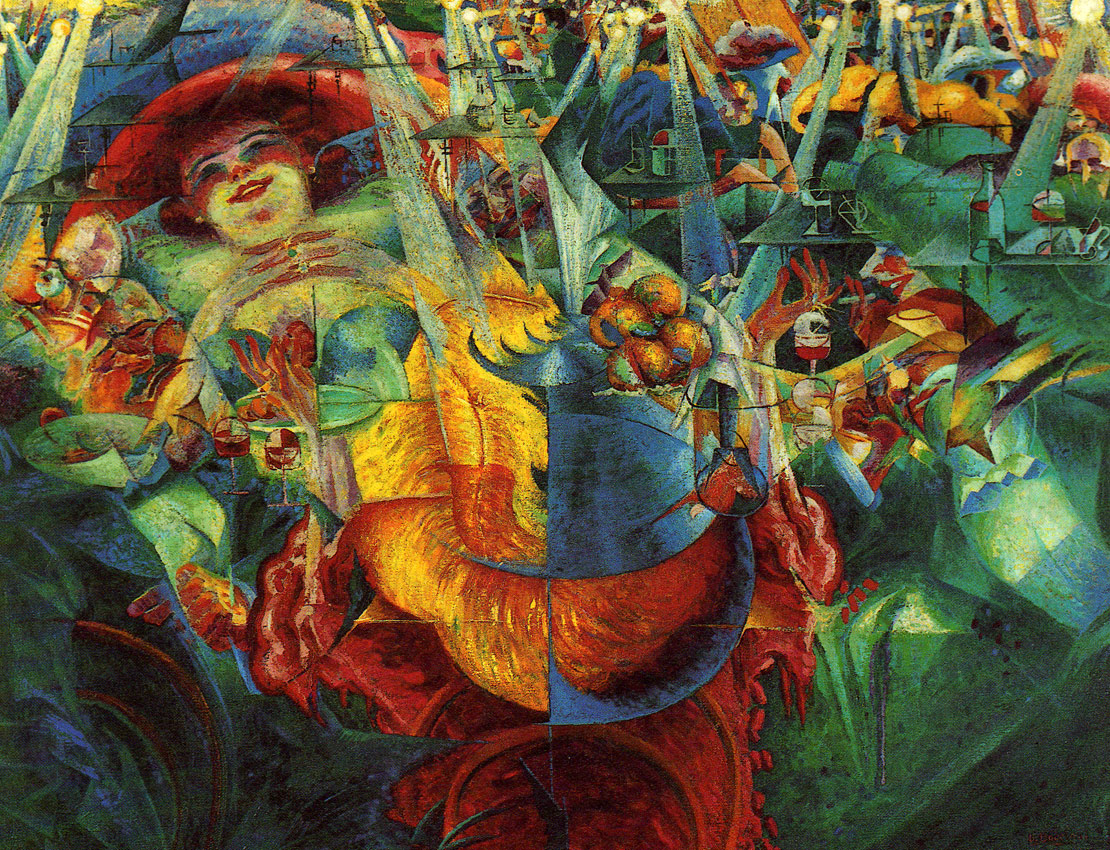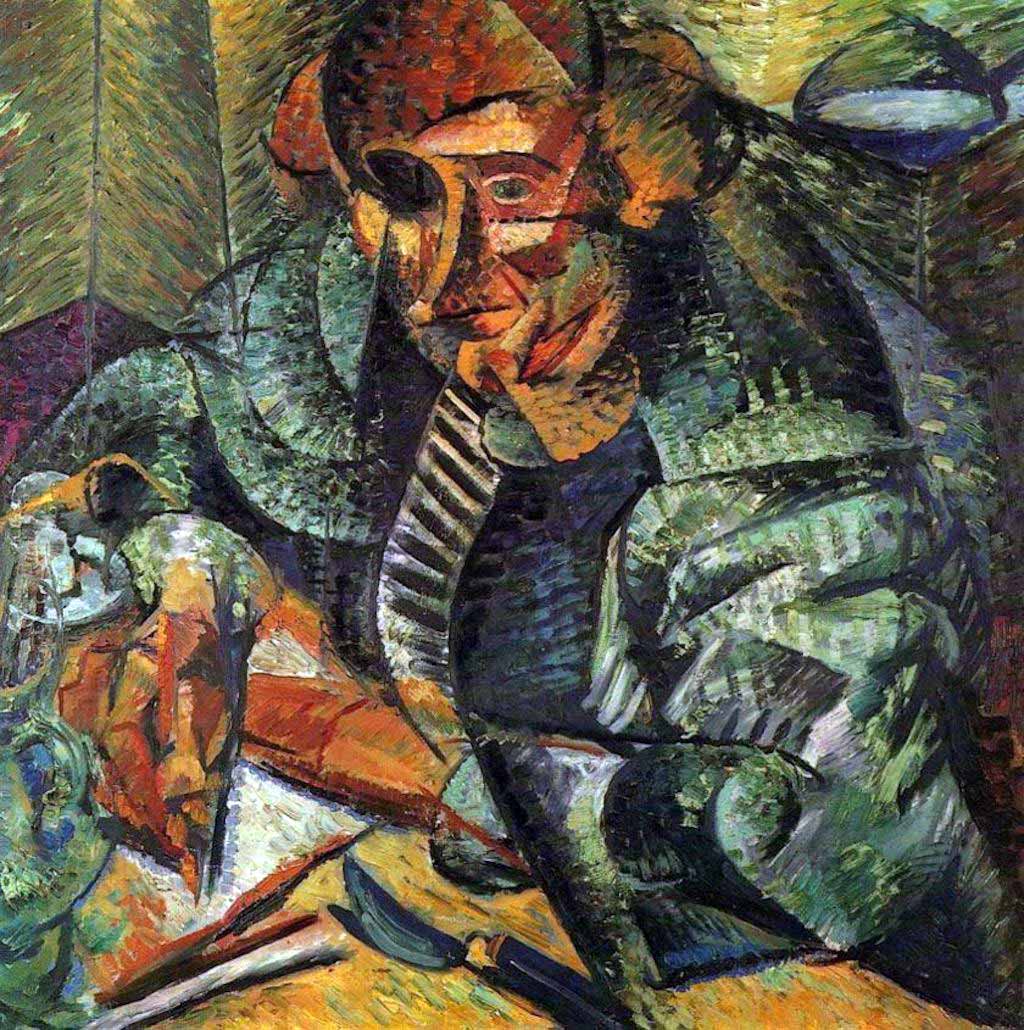
Me gusta y te lo cuento Futurismo (II) Umberto Boccioni Carlo Carrà Gino Severini
This is how F.T. Marinetti, leader of the Futurist movement, began his introduction to the retrospective exhibition commemorating the death of the artist Umberto Boccioni (1882-1916). Italy's avant-garde famously favoured the living over the dead and Marinetti recognised the tragic irony of the situation. His founding manifesto had called.

Umberto boccioni visioni simultanee hires stock photography and images Alamy
'Carlo Carrá' was created by Umberto Boccioni in Expressionism style. Find more prominent pieces of portrait at Wikiart.org - best visual art database. {{selectedLanguage.Name}} Sign In Sign out. en.. Carlo Carrá Umberto Boccioni. Public domain. last edit: 18 Jun, 2013 by xennex

Carlo Carrá Umberto Boccioni The Encyclopedia of Fine Arts
Umberto Boccioni lived in the XIX - XX cent., a remarkable figure of Italian Futurism. Find more works of this artist at Wikiart.org - best visual art database.. Carlo Carra 1881 - 1966. David Burliuk 1882 - 1967. Gino Severini 1883 - 1966. Luigi Russolo 1883 - 1947. Gerardo Dottori 1884 - 1977. Mario Sironi 1885 - 1961. Amadeo de Souza.

Umberto Boccioni painter Italy On This Day
Umberto Boccioni (born October 19, 1882, Reggio di Calabria, Italy—died August 16, 1916, Verona) Italian painter, sculptor, and theorist of the Futurist movement in art. Filippo Tommaso Marinetti (centre), the founder of the Futurist movement, with the artists (left to right) Luigi Russolo, Carlo Carrà, Umberto Boccioni, and Gino Severini.

44+ Baru Lukisan Aliran Futurisme Karya Carlo Carra, Gambar Lukisan
Carlo Carrà (Italian: [ˈkarlo karˈra]; February 11, 1881 - April 13, 1966) was an Italian painter and a leading figure of the Futurist movement that flourished in Italy during the beginning of the 20th century. In addition to his many paintings, he wrote a number of books concerning art. He taught for many years in the city of Milan.

Me gusta y te lo cuento Futurismo (II) Umberto Boccioni Carlo Carrà Gino Severini
Umberto Boccioni and the Futurism. Umberto Boccioni, born in Reggio Calabria in 1882, arrived in Milan in 1908 after living in Padua and Venice and studying at Giacomo Balla's studio in Rome alongside Gino Severini and Mario Sironi. It was in the capital of Lombardy, the hub of modernity and economic development in early 20th-century Italy.

ARDENGO SOFFICI y GIOVANNI PAPINI. Fundadores de la revista literaria "Lacerba", lugar en donde
Umberto Boccioni Oct 19, 1882 - Aug 17, 1916. Umberto Boccioni was an influential Italian painter and sculptor. He helped shape the revolutionary aesthetic of the Futurism movement as one of its principal figures. Despite his short life, his approach to the dynamism of form and the deconstruction of solid mass guided artists long after his.

Carlo Carrà, I funerali dell’anarchico Galli (191011) Artribune
Umberto Boccioni was born in 1882 in Reggio Calabria, a rural region on the southern tip of Italy. His parents had originated from the Romagna region, further north. As a young boy, Boccioni and his family moved frequently, eventually settling in the Sicilian city of Catania in 1897, where he received the bulk of his secondary education.

Me gusta y te lo cuento Futurismo (II) Umberto Boccioni Carlo Carrà Gino Severini
Carlo Carrà (lahir 11 Februari 1881 di Quargnento, Italia - meninggal 13 April 1966 di Milan, Italia pada umur 85 tahun) adalah salah satu pelukis gerakan futurisme berkebangsaan Italia yang berpengaruh pada awal abad ke-20.. Carrà belajar melukis di Akademi Seni Brera, Milan, namun sebagian besar kemampuannya ia dapat dari belajar secara otodidak. Pada tahun 1909, ia bertemu dengan penyair.

Umberto Boccioni. L’Antigrazioso (dettaglio) Tecnica Olio su Tela
Tokoh-tokoh terkenal yang ikut andil mempopulerkan dan mengembangkan aliran futurisme diantaranya adalah Giacomo Balla, Umberto Boccioni, Sculptor, dan Carlo Carrà. Fantastic Art atau Seni Fantastik, bisalah dikatakan sebagai sebuah mashab, aliran seni rupa yang baru saja diakui eksistensinya.

Image Aldo Palazzeschi, Carlo Carrà, Giovanni Papini, Umberto Boccioni, Filippo Tommaso
The exhibition continues with Futurism, represented by a nucleus of artwork unique the world over, displaying Umberto Boccioni, Giacomo Balla, Fortunato Depero, Gino Severini, Carlo Carrà, and Ardengo Soffici. The Twenties and Thirties, moving between the Novecento movement and Abstract Art, develop through a sequence of solo art show.

Carlo Carrá Umberto Boccioni Umberto boccioni, Futurism art, Portrait
Umberto Boccioni (US: / b oʊ ˈ tʃ oʊ n i, b ɒ ˈ-, b ɔː ˈ-/, Italian: [umˈbɛrto botˈtʃoːni]; 19 October 1882 - 17 August 1916) was an influential Italian painter and sculptor.He helped shape the revolutionary aesthetic of the Futurism movement as one of its principal figures. Despite his short life, his approach to the dynamism of form and the deconstruction of solid mass guided.

Ταυτόχρονη Όραση του Umberto Boccioni cityculture.gr
The Street Pavers. Boccioni was a member of the Futurists, a group of Italian artists who announced their existence in 1909 with a manifesto published on the front page of the French paper, Le Figaro. The group called for the abandonment of the past in favor of modern life and aimed to represent the metropolis in "multicolored and polyphonic.

Me gusta y te lo cuento Futurismo (II) Umberto Boccioni Carlo Carrà Gino Severini
Tokoh - Tokoh : • Giacomo Balla • Umberto Boccioni • Sculptor • Carlo Carrà, 11. Aliran Fauvisme. Aliran Fauvisme adalah aliran yang memberikan kebebasan berekspresi, sehingga banyak objek lukisan yang dibuat kontras dengan aslinya. Ciri - ciri : • Seni lukisannya ialah warna-warna yang liar dan kontras.

Me gusta y te lo cuento Futurismo (II) Umberto Boccioni Carlo Carrà Gino Severini
Umberto Boccioni played a crucial role in disseminating the Italian Futurist movement in the visual arts, through both his works and his theoretic writings. He grew up in various Italian cities and expressed his fondness for literature in a novel that was not published. In 1900 he settled in Rome, where he met Gino Severini, with whom he began.

Me gusta y te lo cuento Futurismo (II) Umberto Boccioni Carlo Carrà Gino Severini
Take a look at the fascinating life and work of the famous Italian futurist. 1. Umberto Boccioni Didn't Come From An Artistic Family. Self-Portrait by Umberto Boccioni, 1908, via Pinacoteca Brera, Milano. Umberto Boccioni was born in 1882 in Reggio Calabria, Italy. His family had no connection to art whatsoever.